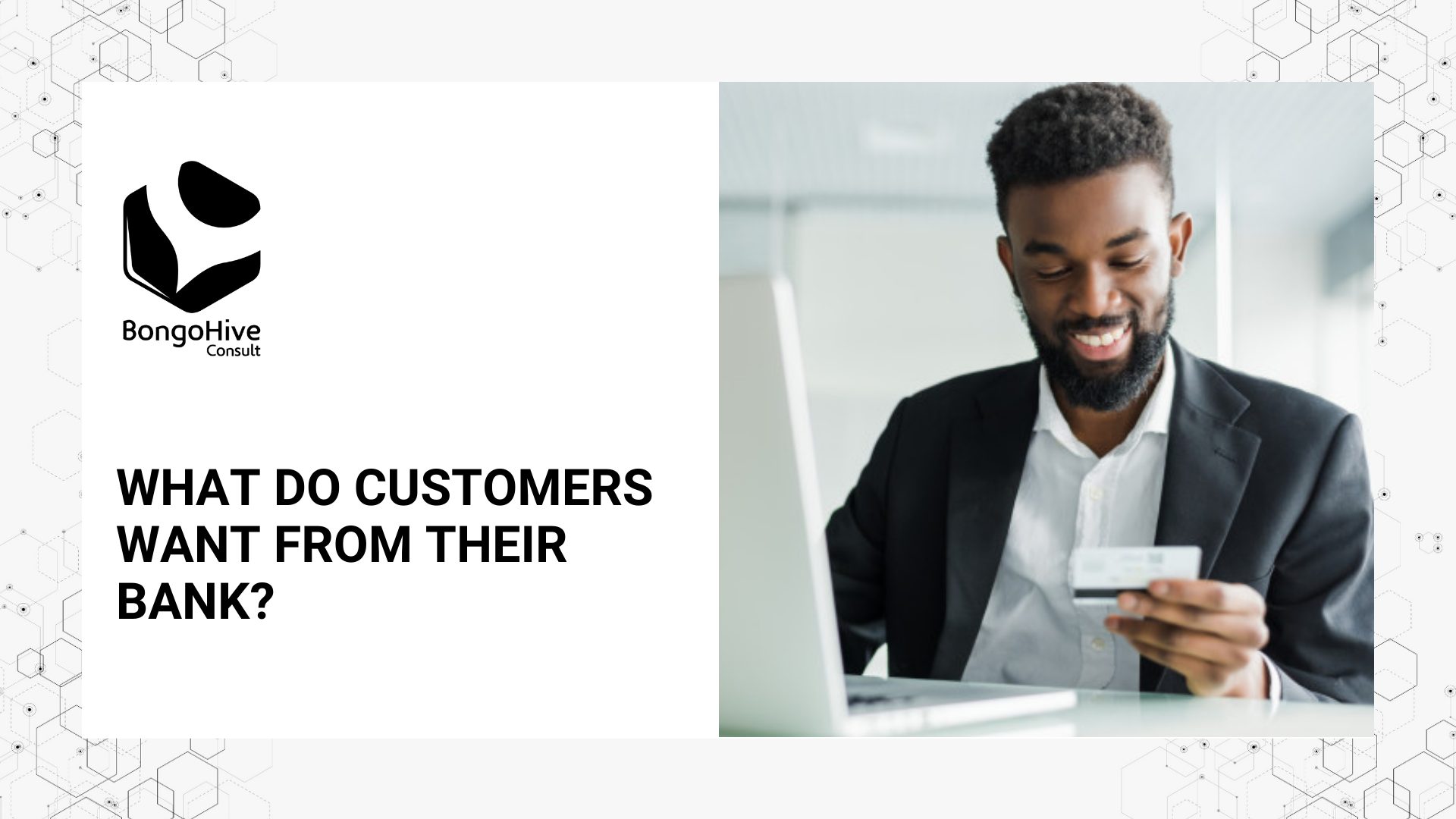
In recent years, Fintechs have emerged as major players in the financial industry, presenting a credible threat to traditional banks.
But how can banks quickly get to speed and stay competitive in the market? To respond to the challenge, banks should offer flexible business practices, cultivate a customer-centric service and leverage a combination of technology.
With the rise in online banking activity due to COVID-19, adoption of innovative strategies and new technologies are crucial for their survival.
So, what do customers really want?
Customers want to make quick contactless payments, an omnichannel banking service, instant 24/7 customer service and personalisation
Let’s break it down.
Allow Me To Make Payments Safely
The increased health concerns and a need to avoid physical contact because of the COVID-19 pandemic have caused customers to drift toward digital payment options.
With contactless payment, customers do not need to carry cash, enter a PIN, swipe their card or sign a receipt, they can simply tap their card on the payment terminal, and they are done!
Let Me Access My Account When And How I Want
In an omnichannel model, every touchpoint, be it online, mobile or in the branch, should provide a customer with access to the services they need, but with a consistent brand experience.
This means that a customer can perform the operations across your different channels, be it through mobile banking, online banking, a call centre or at your branch.
ITProPortal explains: True omnichannel banking platform also allows real-time data synchronization between different channels. For instance, customers can start the onboarding process with one channel and finish it with another without the need to provide the same data over and over again.
Here is an example:
Grace sees a Facebook ad that promotes credit cards at Bongohive Bank (the name is fictional). She is interested and proceeds to the bank’s website. Grace starts her online application directly from the smartphone. In the process, she provides her contact details, but then has second thoughts and decides to terminate the application.
The system created a temporary profile for Grace that is already stored within the omnichannel platform. Two days later, Grace makes up her mind and arrives at the bank’s branch to apply for the credit card again. The manager at the bank starts by asking Grace’s phone number. This number matches a temporary profile that was created two days ago. Grace has already provided all the information online, so it takes only a few minutes and a couple of signatures to finish the application.
Grace could still have completed her registration online using a digital signature either by using mobile or online banking and still get the same results.
Give me the convenience to contact you at anytime
Leveraging AI assistants that are available 24/7, through multiple channels like your bank’s website, Facebook Messenger, or email and more will be a win-win situation for both customers and the bank. Customers want to be able to perform simple requests such as password reset, adding a payee, or making an international transfer on their own.
Through digitization, which allows technology to be embedded in every aspect of the customer service experience, banks can unleash the power of personalisation.
Sell It To Me Like You Know Me
Personalisation instead of one-size-fits-all is what customers want. To meet your business goals, you need to move from a product-centric approach to a customer-centric approach. Big data analytics can facilitate your customer segmentation process by providing data on their demographics, daily transaction, purchasing behaviour and so on. This way, you can develop products that are suited for each of your segmented markets. When you connect with your customers in a more meaningful way and satisfy their needs, you can guarantee your institution large sales volumes.
Since customers can be segmented based on different dynamics, you can offer segment-based marketing where you can use one marketing campaign to target customers with similar characteristics.
Big data allows you to create highly targeted and personalised marketing content, which is vital for customer retention. By leveraging on big data analytics, your institution can save costs by tailoring marketing campaigns to specific segments that will engage with your content rather than aiming at a broader audience that won’t attach value to your message.
Read more: How financial institutions can stay ahead of the digital curve by leveraging big data.
This is certainly not all that customers want, the best way to know what customers really want is by talking to customers themselves. To keep surviving and thriving, banks would need to turn themselves into innovations units and keep adjusting as customer needs change.
We are open to discussions on opportunities that technology and innovation can unlock for your business, talk to us today!
 BongoHive
BongoHive